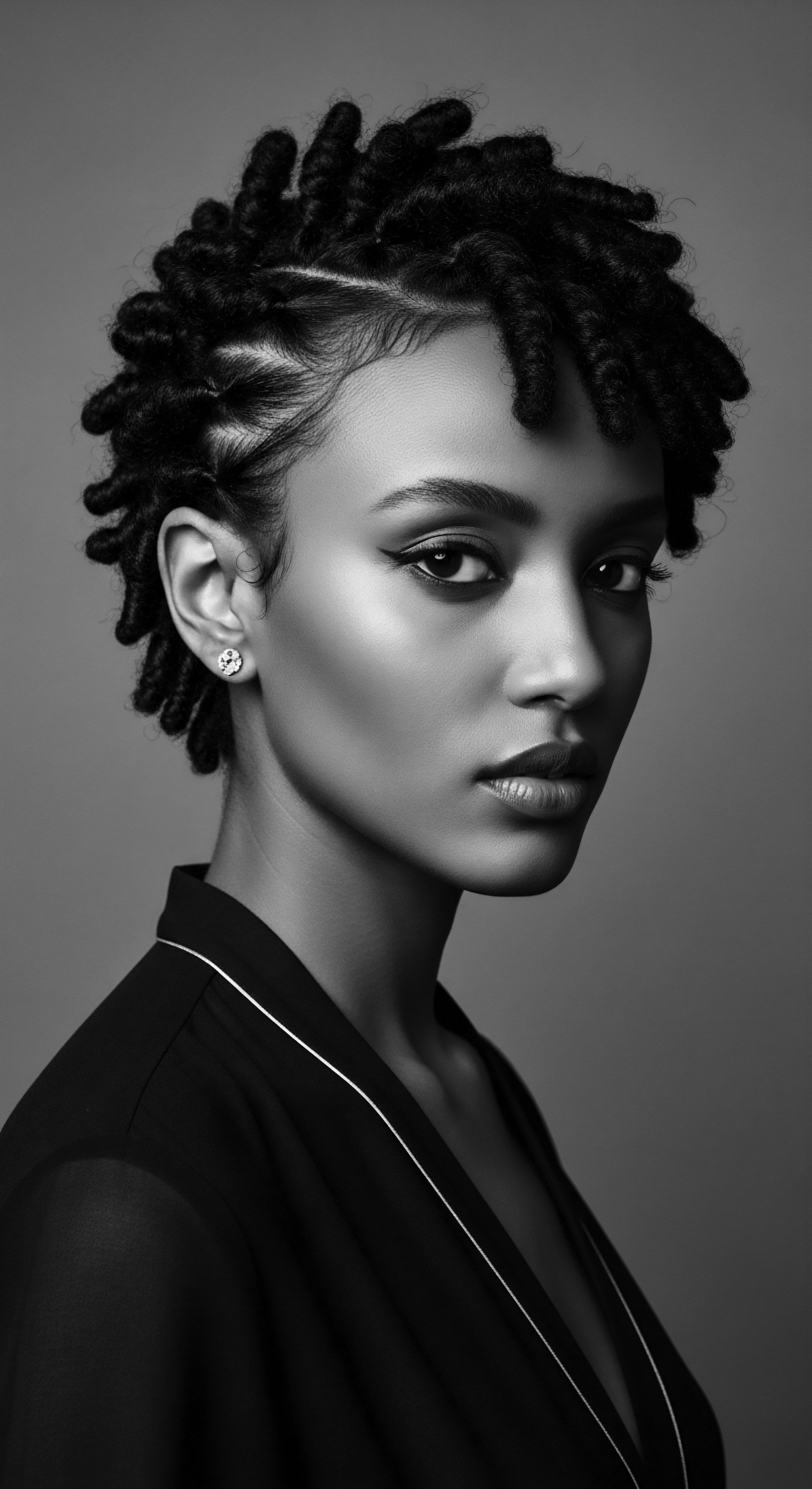
Roots
The story of textured hair, a story held within each coil and strand, is as old as the African continent itself. It whispers of sun-drenched landscapes, of ancestral ingenuity, and of a deep, abiding connection to the land that cradled humanity’s earliest steps. To truly grasp how ancient African environments shaped the protective qualities of hair is to embark on a journey through time, understanding that hair was never merely adornment.
It served as a shield, a communicator, and a living record of collective wisdom. This inquiry into its origins reveals how the very biology of textured hair evolved in dialogue with the fierce sun and shifting climates, laying the foundation for generations of protective care.

Textured Hair Anatomy and Environmental Design
The unique architecture of textured hair, characterized by its tight spirals and coils, represents a masterful adaptation to the equatorial African sun. Scholars posit that this hair type, often described as afro-textured, is an evolutionary product, a biological response to the intense ultraviolet radiation of the African environment. It acts as a natural shield, providing a crucial barrier against solar heat and harsh UV rays for the scalp,
Studies have shown that tightly coiled hair significantly reduces the amount of solar heat reaching the scalp, offering superior protection compared to other hair types, including straight or wavy hair (Lasisi et al. 2023). This spring-like structure creates an airy effect, allowing for thermoregulation and minimizing the need for the body to expend excess water through sweating to stay cool, The spiraled nature of the strands creates a natural buffer, a kind of layered canopy that deflects sunlight before it penetrates the scalp, allowing the human brain to grow in size by guarding against dangerous heat conditions, This scientific understanding deepens our appreciation for the intrinsic resilience of textured hair, recognizing it as a heritage of survival forged in ancient climates.
Textured hair, with its unique coiling, evolved as a natural defense against the intense African sun, safeguarding the scalp and aiding thermoregulation.
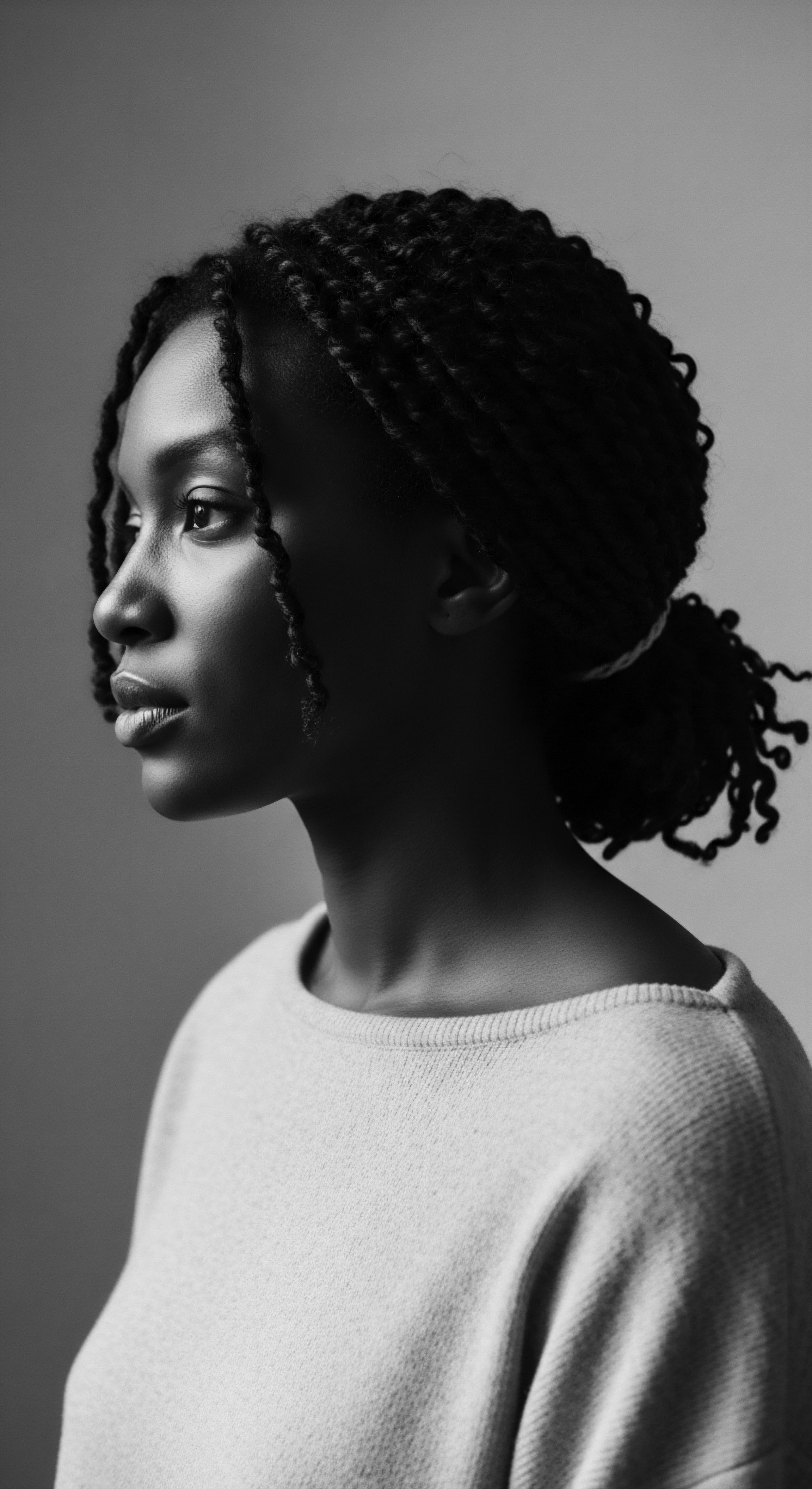
Early Tools and Hair’s Sacred Place
Beyond its biological gifts, the relationship between hair and environment manifested in the tools crafted and the practices employed. Archaeological discoveries throughout ancient African civilizations, such as Kush and Kemet (present-day Sudan and Egypt), have unearthed combs dating back as far as 7,000 years, These combs, often carved from wood, bone, or ivory, were far more than simple grooming implements. They were cultural heirlooms, bearing symbols of tribal identity, social standing, and even spiritual connection,
The design of these ancient combs, often featuring wider gaps between teeth compared to those found in other regions, speaks to an innate understanding of textured hair’s unique properties and its tendency to be fragile and prone to breakage. This thoughtful design ensured gentler care, preserving hair health in environments that could otherwise be drying or challenging. Such tools underscore the careful attention given to hair maintenance across millennia.
- Afro Comb ❉ Archaeological finds from Kush and Kemet, some dating back 7,000 years, reveal intricately decorated combs used for styling, status, and spiritual connection.
- Wider Gaps ❉ The design of ancient African combs often featured more space between teeth, demonstrating early awareness of textured hair’s delicate nature.

Ritual
The protective impulse, so deeply ingrained in the biology of textured hair, found its conscious expression in the rituals and styling traditions of ancient African communities. These practices, passed down through the generations, were not merely aesthetic choices. They were sophisticated strategies, born of careful observation of the environment and a profound understanding of hair’s needs. The very act of styling became a communal ceremony, a tender thread weaving together family, community, and the enduring wisdom of the land.

Protecting Strands From Elements
Ancient African societies developed an impressive array of protective hairstyles to shield hair from environmental stressors such as intense sun, pervasive dust, drying winds, and varying humidity levels. Braids, twists, and locs were not merely cultural markers; they were practical forms of defense. Braiding, for example, can be traced back 5,000 years in African culture, around 3500 BC, These styles tucked away the most vulnerable parts of the hair, the ends, minimizing exposure and reducing breakage, particularly crucial for hair types prone to dryness,
Consider the Himba People of Namibia, residing in a harsh desert climate. Their traditional practice of applying Otjize, a mixture of butterfat and red ochre pigment, directly showcases how environment shaped hair protection. Otjize serves as a sunscreen, guarding both skin and hair from the fierce sun, and acts as a mosquito repellent, It also functions hygienically in water-scarce conditions, flaking off to remove dirt and dead skin, while wood ash can be used for cleansing the hair, This powerful example illuminates the direct, ingenious ways communities adapted to their surroundings, blending beauty, hygiene, and protection into a unified practice.
Beyond styling, headwraps also played a significant role in hair protection. These versatile coverings, crafted from vibrant fabrics, shielded wearers from the sun’s harsh rays and dust, while simultaneously acting as powerful symbols of identity, status, and spiritual beliefs across diverse African cultures,
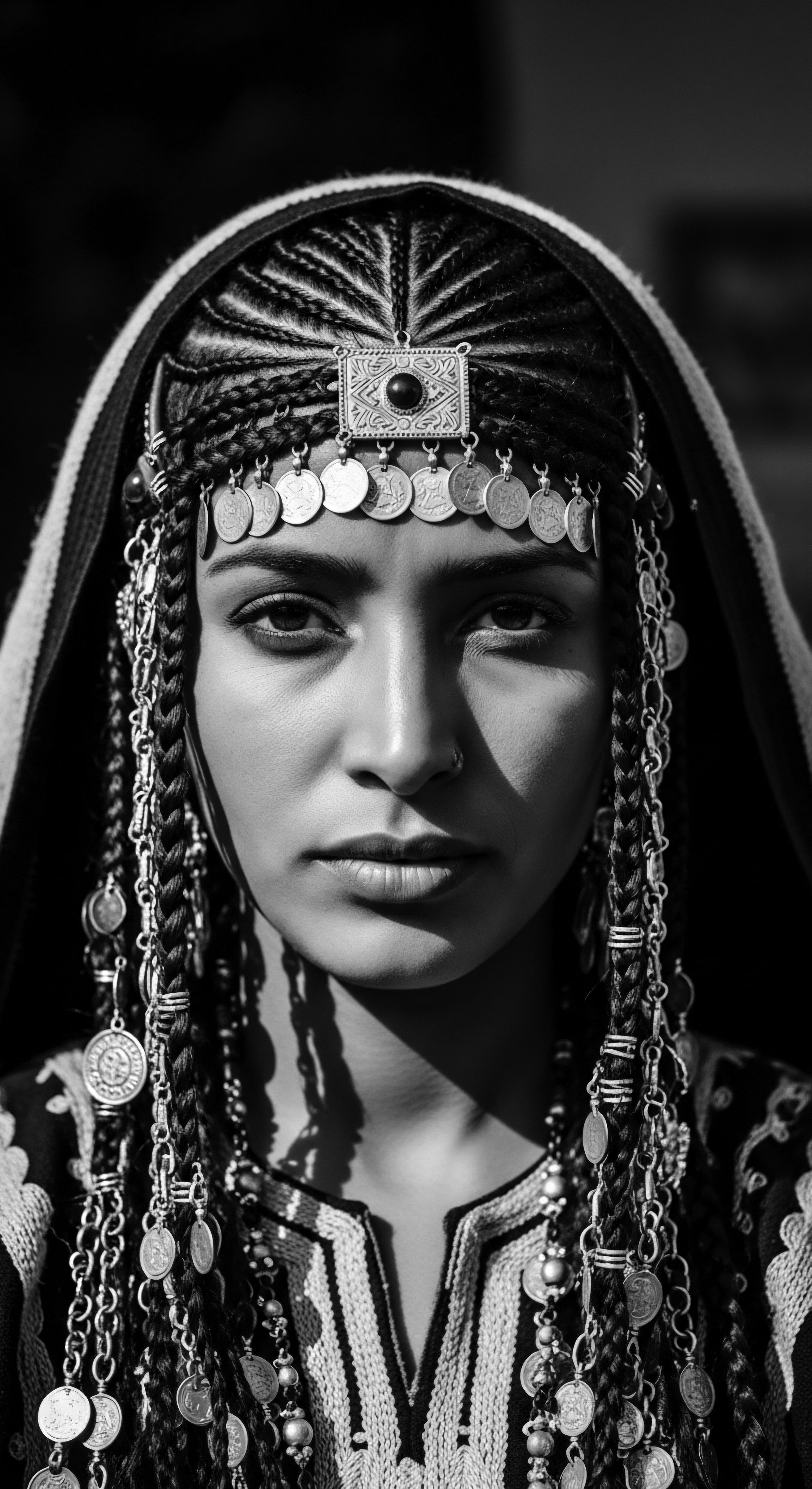
Ingredients From the Earth
The immediate environment provided the ingredients for ancient African hair care. Natural oils, butters, and plants were harvested and prepared, their properties understood through generations of empirical knowledge. Shea butter, coconut oil, and aloe vera, all abundant in various African regions, were routinely applied to nourish and protect hair. These natural remedies prioritized moisture and scalp health, acting as direct responses to environmental dryness.
In Central Africa, particularly among the Bassara/Baggara Arab tribe in Chad, the Chébé Plant stands as another remarkable example. The seeds of this plant are dried and ground into a powder, then mixed with water or moisturizing agents like shea butter to create a paste applied to the hair. While Chébé powder may not stimulate hair growth, it is believed to help with length retention by filling hair shaft spaces and sealing the cuticle, especially when applied to hydrated hair and then braided, locking in moisture and providing protection. This traditional use directly addresses the environmental challenge of moisture loss, particularly relevant in dry climates.
| Traditional Practice Braids, Twists, Locs |
| Environmental Context Sun, dust, wind, dryness |
| Protective Benefit Minimizes exposure, reduces breakage, retains moisture. |
| Traditional Practice Otjize Application (Himba) |
| Environmental Context Harsh desert climate, intense sun, insect presence |
| Protective Benefit Sunscreen, insect repellent, hygiene in water scarcity. |
| Traditional Practice Headwraps |
| Environmental Context Sun, dust, heat |
| Protective Benefit Physical barrier, shields hair from elements. |
| Traditional Practice Shea Butter and Natural Oils |
| Environmental Context Dry climates, moisture loss |
| Protective Benefit Nourishes, seals in hydration, maintains scalp health. |
| Traditional Practice These heritage practices showcase the ingenuity of ancient African communities in adapting hair care to environmental challenges. |

Relay
The knowledge forged in ancient African environments, initially manifest in biological adaptation and later in conscious ritual, continues to reverberate through the living traditions of textured hair care today. The relay of this ancestral wisdom extends beyond mere stylistic choices; it forms a profound holistic approach to wellbeing, problem-solving, and identity that remains central to Black and mixed-race experiences. Examining these deeper currents reveals how historical environmental pressures shaped not only what was done to hair, but also how it was understood and valued within community life.

Connecting Ancient Wisdom to Modern Hair Science
The principles that guided ancient African hair care practices, such as prioritizing moisture retention and minimizing manipulation, find validation in contemporary hair science. Textured hair, by its very coiled nature, can be prone to dryness because its unique structure makes it more challenging for natural oils from the scalp to travel down the entire strand. This inherent characteristic, combined with the often dry or dusty conditions of many ancient African environments, made moisture preservation a paramount concern.
Protective styles, dating back millennia, directly address this vulnerability. Braids, twists, and cornrows, by keeping the hair tucked away, create a controlled micro-environment around the strands, reducing exposure to environmental factors that lead to moisture loss and breakage, This ancestral insight aligns perfectly with modern recommendations for maintaining the health of textured hair. The meticulous layering of natural products, whether ancient oils or contemporary leave-in conditioners, acts to seal in hydration, a practice rooted in the environmental necessity observed by our forebears.

How Do Cultural Rituals Foster Hair Resilience?
The ritual of hair care in ancient Africa was inherently communal. It was a time for bonding, for storytelling, and for the intergenerational transmission of knowledge, This shared experience, often taking hours, solidified community ties and ensured that the wisdom of how to care for textured hair in specific environments was passed down with reverence,
Consider the significance of hair as a spiritual and social conduit. In many ancient African cultures, hair was considered the most elevated part of the body, a connection point to the divine or ancestral realms, The care given to it was not just about physical protection from the environment, but also about spiritual well-being and social communication. A woman’s hairstyle could convey her marital status, age, wealth, or ethnic identity, This layered meaning imbued hair protection with a far deeper purpose than mere physical preservation; it was about maintaining one’s standing, connection, and spiritual alignment within a community intrinsically linked to its environment.
A powerful instance of hair’s symbolic weight is seen during the transatlantic slave trade. Enslaved Africans were often subjected to forced head shaving, a calculated act to strip them of their cultural identity and sever their connection to their heritage, Yet, even under such horrific conditions, the ancestral knowledge of braiding persisted. Braids became secret maps for escape routes, and the act of hair care, often done in quiet solidarity, became a form of resistance and a means to preserve identity and humanity, This historical example shows the incredible resilience of hair traditions, adapting to environments of both nature and human oppression, always retaining their protective and communicative power.
Braids became known as a “protective style” because they allowed wearers to style their hair without causing damage to their hair texture.

Adapting Practices for Environmental Shifts
The influence of ancient African environments also extends to how protective practices adapted to subtle shifts in climate within the continent. Communities in arid regions developed techniques to retain moisture, while those in more humid areas might have focused on preventing frizz or managing density. The ingenuity lay in utilizing local flora and minerals, creating a geographically informed pharmacopoeia for hair care.
- Humid Climates ❉ In areas with high humidity, traditional styling methods might have included techniques that helped to define curls while allowing for natural air circulation.
- Dry Winds ❉ Regions experiencing persistent dry winds saw emphasis on sealing products like butters and heavy oils to prevent rapid moisture evaporation.
- Dust Protection ❉ Headwraps and tightly coiled styles offered practical defense against dust and debris, especially for nomadic communities.
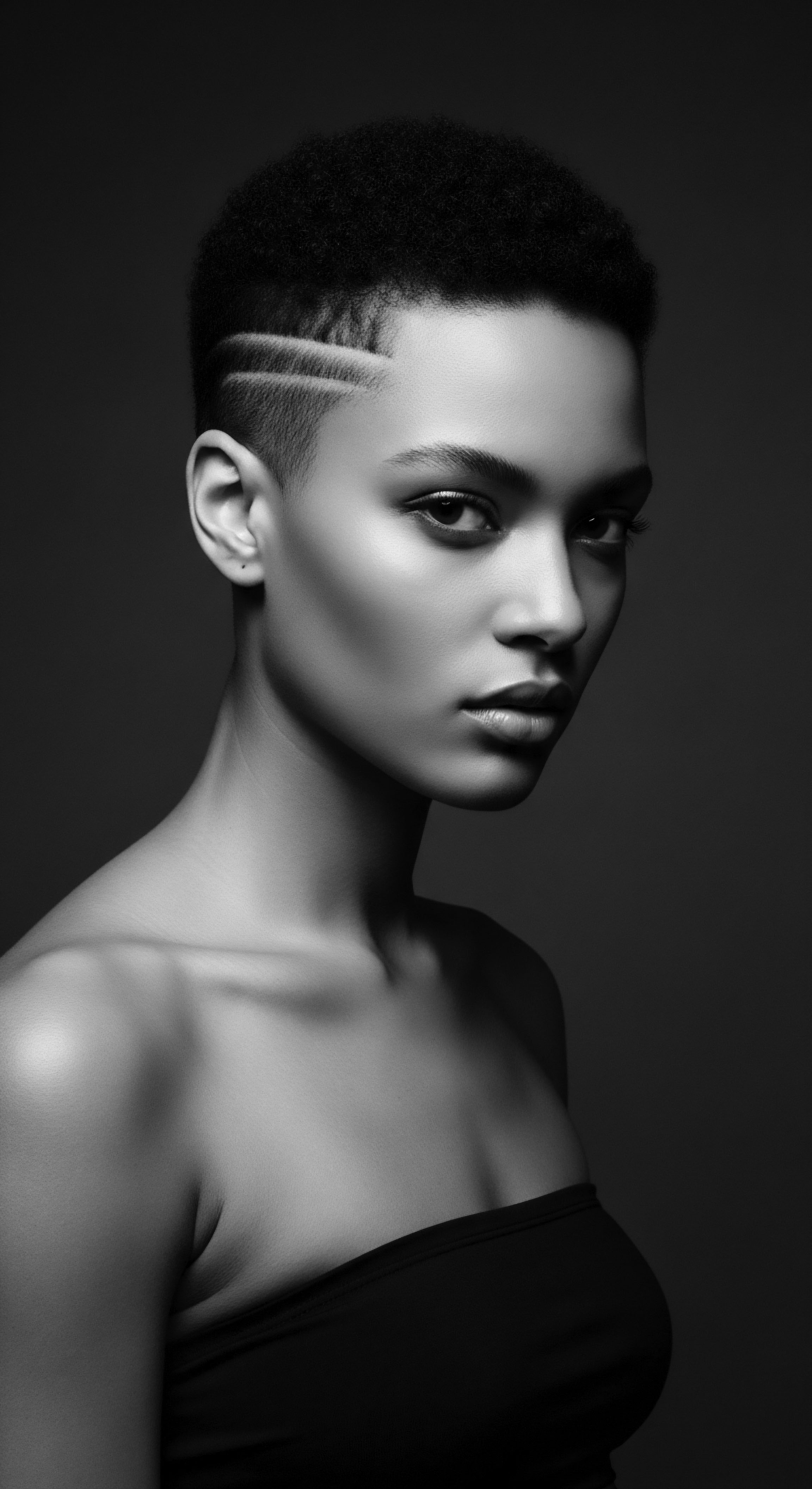
Reflection
Our journey through the ancient African environments and their profound influence on hair protection brings us to a singular realization ❉ textured hair is a living archive. Each coil, each strand, carries the memory of ancestral wisdom, resilience, and a deep connection to the earth. The ‘Soul of a Strand’ ethos finds its fullest expression in this understanding, acknowledging hair not as a superficial attribute, but as a vibrant legacy.
The protective styles, the indigenous ingredients, the communal rituals – these practices were not born of caprice. They arose from a necessity shaped by sun, wind, dust, and the very landscape of Africa. They speak to an ancestral intelligence, a profound ecological literacy that saw hair as an extension of the body’s interaction with its surroundings. This heritage informs every brushstroke of our contemporary care, reminding us that true wellness for textured hair is inextricably linked to honoring its storied past.
As we move forward, understanding this deep heritage empowers us. It allows us to view our hair with reverence, recognizing in its very structure the ingenuity of our forebears. It encourages us to seek holistic solutions, to learn from nature’s bounty, and to continue the vibrant traditions that have protected, celebrated, and communicated through textured hair for millennia. The echoes of ancient African environments continue to guide our hands, our choices, and our appreciation for the unbound helix that is our textured hair heritage.
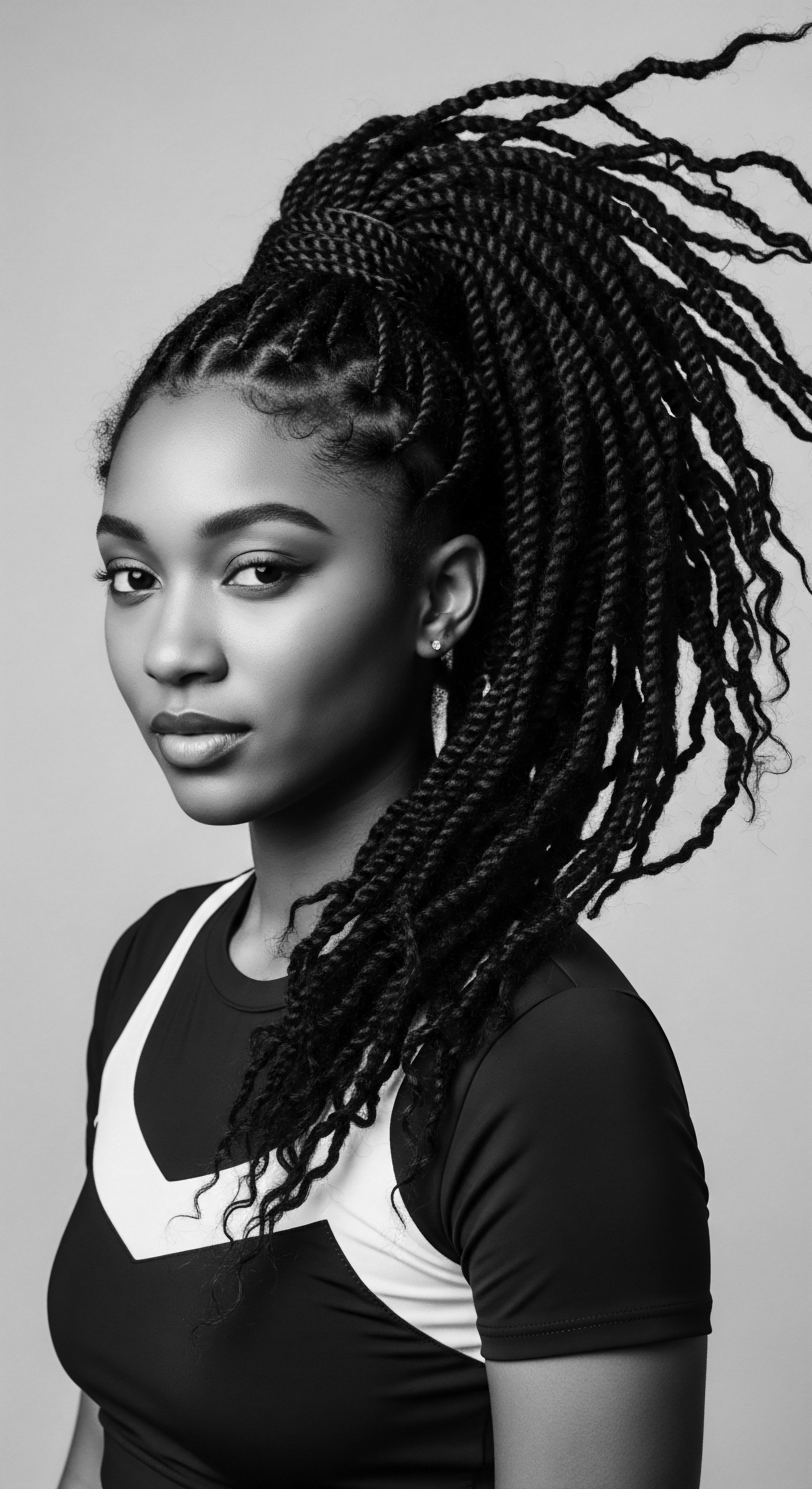
References
- Afriklens. (2024, November 1). African Hairstyles ❉ Cultural Significance and Legacy.
- Afriklens. (2024, December 3). Natural African Haircare ❉ Celebrating the Afro and Braids.
- BLAM UK CIC. (2022, September 15). The history of Black Hair.
- CURLYTREATS Festival. (2025, February 8). Afro comb ❉ the cultural and political legacy behind this iconic hair tool.
- EdwardAsare – Digital Marketer. (2021, April 17). The Role of Hair in Ancient African Cultures.
- Flora & Curl. (n.d.). The History of Black Hairstyles.
- Happi. (2021, October 5). Hair Care Is a Focus in Africa.
- Lasisi, S. et al. (2023). Human scalp hair as an adaptation for thermoregulation. Proceedings of the National Academy of Sciences.
- Library of Congress. (n.d.). Heavy is the Head ❉ Evolution of African Hair in America from the 17th c. to the 20th c.
- Loughborough University. (2023, June 8). Curly hair kept early humans cool.
- Obé Headwear. (2024, August 5). Significance of headwraps.
- Obscure Histories. (2024, February 13). Ancient Gems ❉ A Historical Survey of African Beauty Techniques.
- OkayAfrica. (n.d.). A Regional Walk Through The History of African Hair Braiding.
- Odele Beauty. (2021, February 22). 6 Things Everyone Should Know About Black Hair History.
- Pure Love Artisan Sk. (2024, May 24). The Age-Old Beauty Rituals of the Himba Tribe.
- The Independent. (2023, June 8). Curly hair may have evolved to keep early humans cool, study suggests.
- The Purple Pulse. (2024, January 21). Protective hairstyles hold cultural significance.
- Trad Magazine. (2021, April 11). Otjize ❉ Earth’s Beauty.
- Wikipedia. (n.d.). Otjize.
- Wikipedia. (n.d.). Kinky hair.
